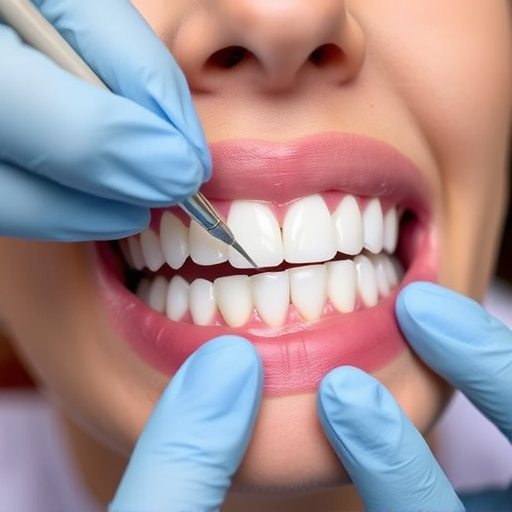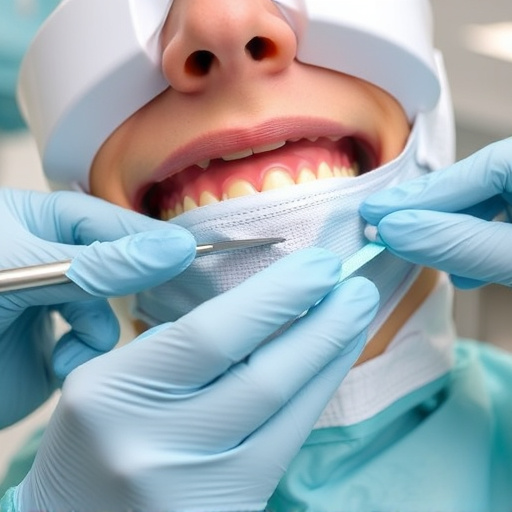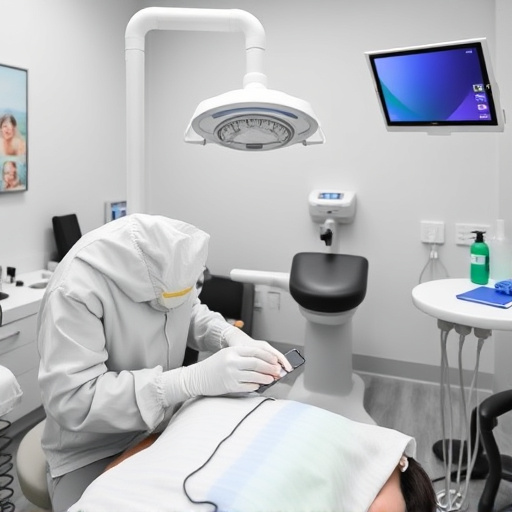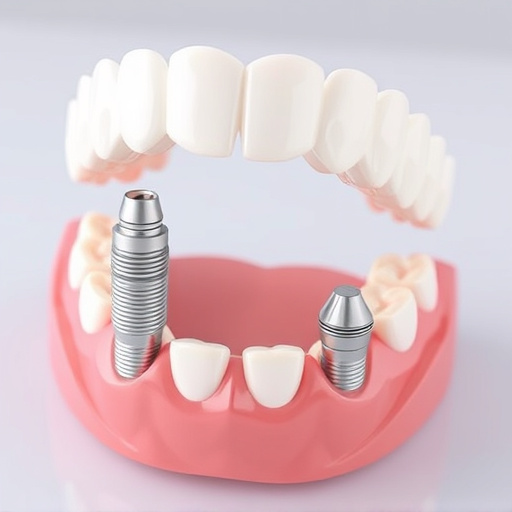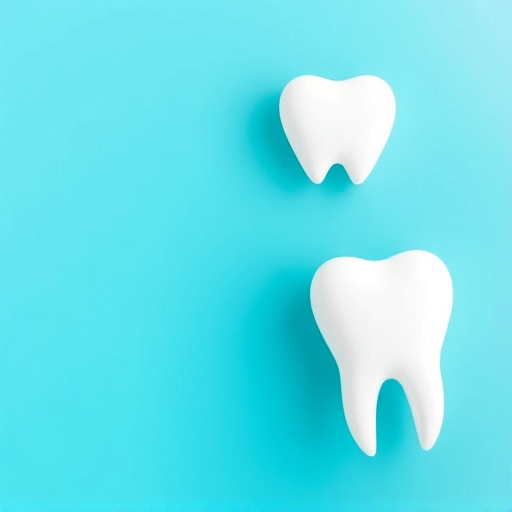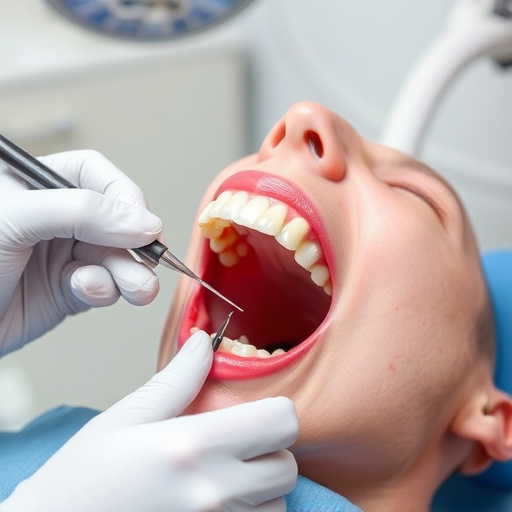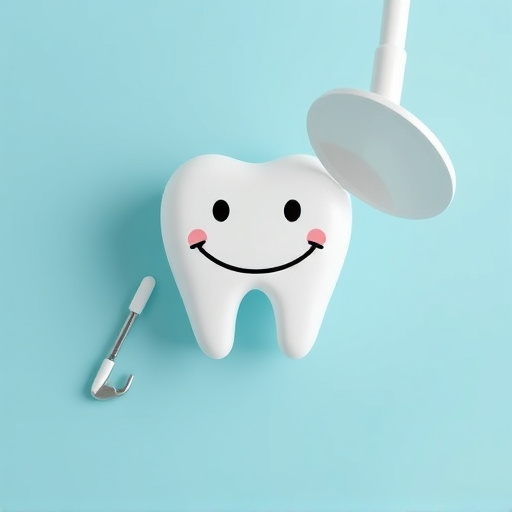Gum disease, caused by bacterial plaque, ranges from mild to severe. Early signs include bleeding and swollen gums. Regular oral exams and cleaning are vital for prevention. Advanced technologies like dental imaging and laser scanning aid in accurate gum health evaluations, facilitating tailored treatments for all ages.
Gum health is a crucial aspect of overall well-being, especially when it comes to early stage gum disease. This article delves into the essential elements of evaluating and understanding periodontal issues. We explore the causes and subtle signs of gum disease, emphasizing the vital role of oral hygiene in prevention. Additionally, we highlight advanced diagnostic tools that enable accurate evaluation, empowering individuals to take proactive measures for optimal gum health.
- Understanding Gum Disease: Causes and Early Signs
- The Role of Oral Hygiene in Prevention
- Diagnostic Tools for Accurate Evaluation
Understanding Gum Disease: Causes and Early Signs

Gum disease is a common yet often overlooked oral health issue that can range from mild to severe. It’s caused by bacteria in the mouth that form plaque, a sticky film that irritates and inflames the gums. If left untreated, this inflammation can lead to periodontitis, affecting not just the gums but also the structures that support teeth. Early signs of gum disease include bleeding gums during brushing or flossing, red, swollen, or tender gums, and persistent bad breath. Regular oral exams and thorough teeth cleaning by a family dentistry professional are crucial in detecting these early indicators and preventing the progression of gum disease. A gum health evaluation is essential for maintaining optimal oral health and can be incorporated into your routine oral exams.
The Role of Oral Hygiene in Prevention

Maintaining good oral hygiene is a cornerstone in the prevention and management of gum disease. Regular brushing and flossing are fundamental to removing plaque buildup, a sticky film of bacteria that forms on teeth and gums. This daily practice disrupts the bacterial ecosystem, preventing irritation and inflammation that characterize early-stage gum disease, known as gingivitis.
In addition to these at-home care routines, routine oral exams and dental cleanings by professionals play a crucial role. These visits allow for a thorough gum health evaluation, identifying potential issues early. Dentists can remove stubborn plaque and tartar deposits that brushing and flossing might miss, ensuring optimal oral hygiene. Should more advanced gum disease develop, requiring treatments beyond routine cleanings, such as dental cleanings or even tooth extractions, proper oral hygiene remains vital for promoting healing and preventing further complications.
Diagnostic Tools for Accurate Evaluation

In the realm of gum health evaluation, several diagnostic tools are pivotal for accurately assessing early-stage periodontal disease. Dental professionals employ advanced technologies such as dental imaging and specialized instruments to detect even subtle signs of gum inflammation and bone loss. These non-invasive methods include X-rays, which provide detailed images of the jawbone and teeth, aiding in identifying areas of deterioration that may not be visible during a routine oral exam.
Furthermore, advanced diagnostic techniques like laser scanning and ultrasound are becoming increasingly common in children’s dentistry and general dental practices. Laser scanners can precisely measure gum pocket depths, while ultrasounds offer high-resolution images, enabling dentists to visualize the depth of inflammation and even detect early signs of bone loss around dental implants. Such tools not only facilitate accurate gum health evaluation but also play a crucial role in tailoring effective treatment plans for patients across all age groups.
A thorough gum health evaluation is key to early detection of gum disease, allowing for prompt intervention and effective management. By understanding the causes and recognizing early signs, individuals can take proactive measures through improved oral hygiene practices. Utilizing advanced diagnostic tools enables dental professionals to accurately assess and treat gum disease in its initial stages, preventing further complications and promoting overall oral health. Regular check-ups and a conscious effort to maintain gum health are essential steps towards a bright, healthy smile.








